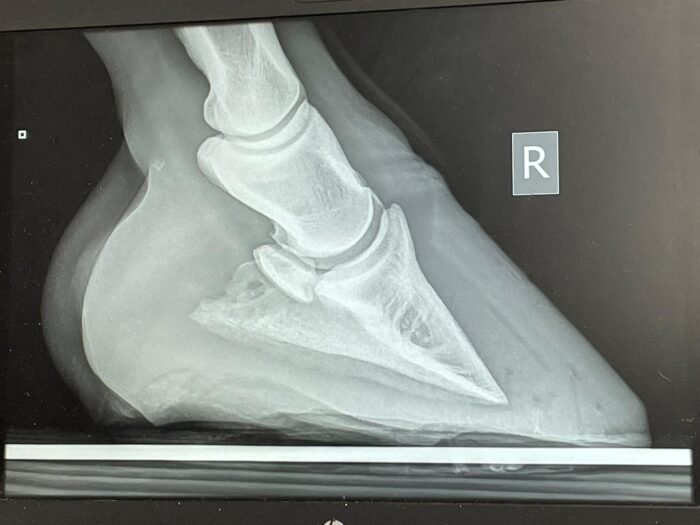
As we approach the warmer months of the year, many of us here in the horse insurance team have been discussing the increased risk of laminitis and we’re sure this is a worry for many of our policyholders also.
Our very own Social Media Executive Georgina, unfortunately, had her 14’2 Connemara gelding diagnosed with laminitis in the August of 2021, and we wanted to share her experiences to help provide some insight into this painful and debilitating disease.
Carry on reading to find out more about Mr Q’s road to recovery from laminitis.
You can also watch the Youtube video to find out more about feeding a laminitic prone pony/horse below.
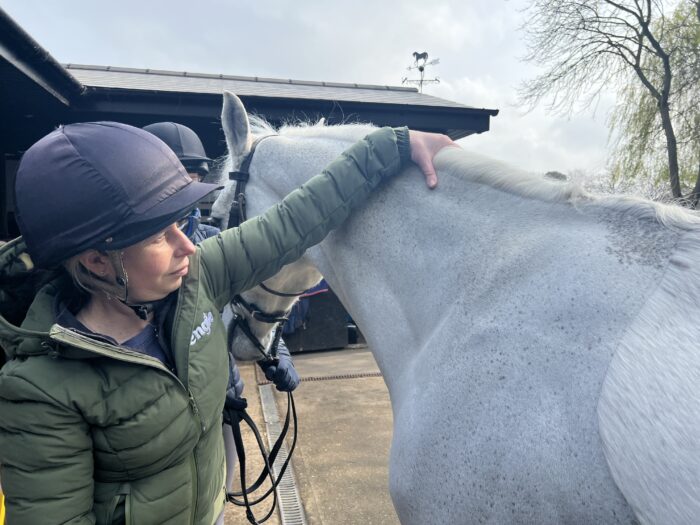
Firstly, thanks for taking the time to read all about Mr Q’s laminitis journey. I wanted to be able to share my own story with fellow equestrians, helping to ultimately provide some insight into this disease but also offer some hope for fellow owners of laminitic ponies/horses.
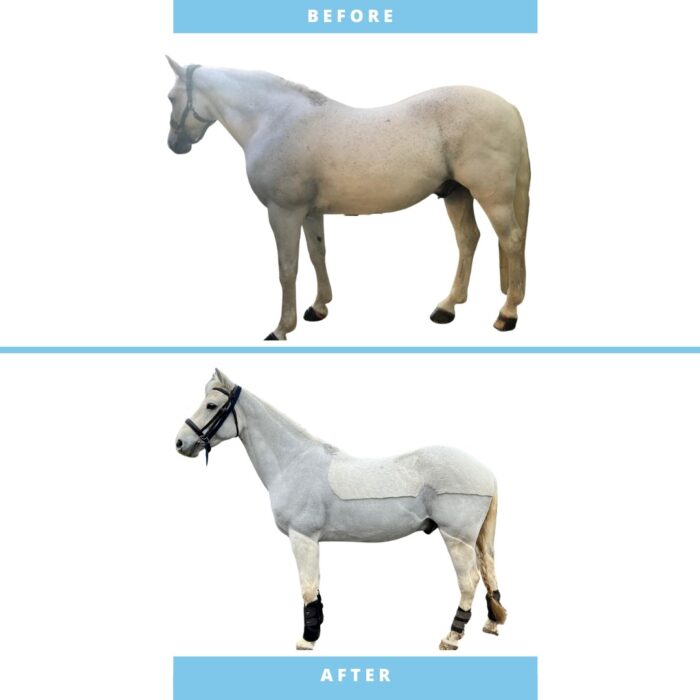
13th August 2021
I first noticed something wasn’t quite right on the morning of 13th August. I pulled Q out of the stable as usual to muck him out and noticed a few short steps instantly. I felt his pulse in both front two feet and could only feel slight heat, however, decided to keep him in the stable and call my farrier in the first instance.
After calling my farrier we agreed to leave him in the stable for a few days and I would continue to update him on how he was looking.
Just as a bit of background – Q had been worked the day before and was sound, he was actually bucking and whizzing around on the lunge.
Suspecting it was laminitis, before the vet and farrier visit, I added more woodchips to Q’s bed, ensuring the woodchips were flush to his door alongside swapping his haylage to soaked hay.
15th August – Vet and Farrier visit
After a few days of rest in the stable, Q still wasn’t right – particularly on his near fore, I can only describe his walking to be more of a ‘slamming’ action.
X rays
I requested that my vet (Jonathan Lee from Payton & Lee) attend the visit with an x-ray machine.
Why use an x-ray machine?
Using an x-ray machine (radiographs) enables the vet to see what is really going on within the hoof capsule ensuring you see the full story. I wanted to check if Q was diagnosed with laminitis if the pedal bone had rotated away from the hoof wall and if so what the extent of the rotation was.
Undercovering the truth
Unfortunately, Jonathan confirmed the dreaded news ‘he has laminitis’. Following this we then used the x-ray machine to determine if there was indeed rotation of the pedal bone.
As you can see from these images, there was some rotation. Q’s left fore had rotated 5 degrees and his right fore had rotated 10 degrees.
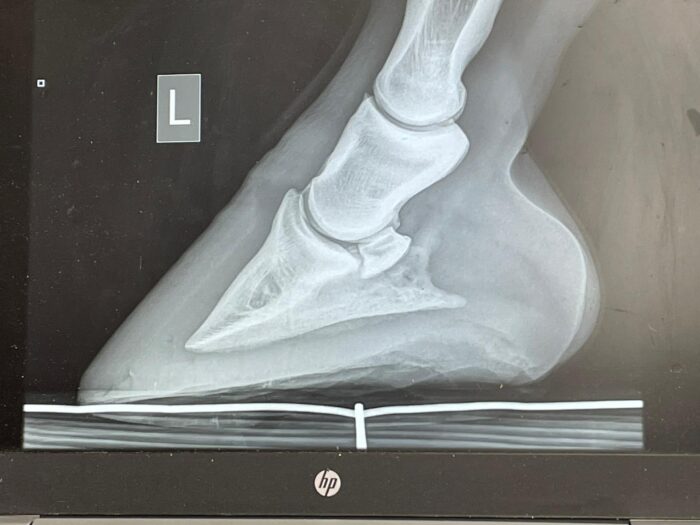
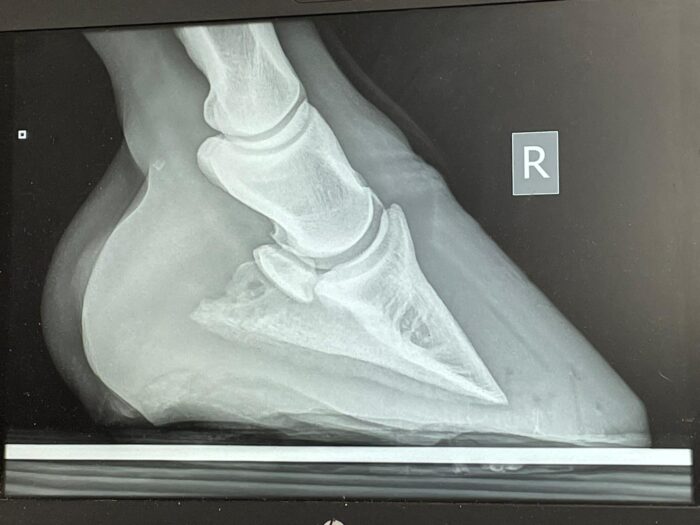
We decided to take off his front shoes, slightly trim his feet and pad with dental impression and vet wrap – not forgetting tape and then some more electric tape as Q had quickly figured out it was pretty easy (and fun!) to try and pull off the handmade boot.
My vet and farrier advised me to change his boots and dental impressions once a week.
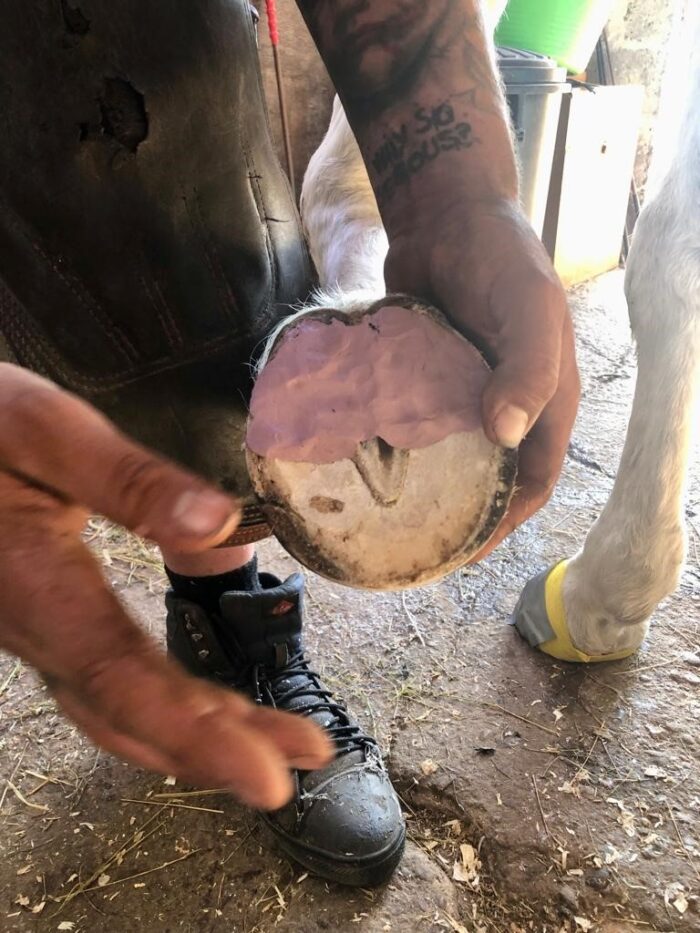
Tip – You can purchase special laminitic hoof boots to help ease the pressure and pain.
Box Rest
I was also advised to carry on with box rest. Jonathan gave me the heads up that this would be a long road to recovery.
Let’s talk about feed!
Soaking hay – 1.5% of body weight
Jonathan told me to leave Q in the stable with a big thick bed right up to the door. Luckily, I had already done this, however, I did need to cut his hay down either further.
He confirmed to me to feed 1.5% of Q’s body weight (500kg) over a 24-hour period, this equates to 6.5KG of soaked hay (including food and balancer).
You can read more about % of hay needed to aid weight loss here
Two haynets of around 3kg were soaked in buckets with fresh water for 12 hours at a time.
In regards to feed, I spoke to the helpful team from Dengie Horse Feeds who advised me to feed Hi-Fi Molasses Free. This is a low calorie, sugar and starch fibre feed – ideal for leisure horses and ponies and those promote to laminitis. You can find out more about this feed here.
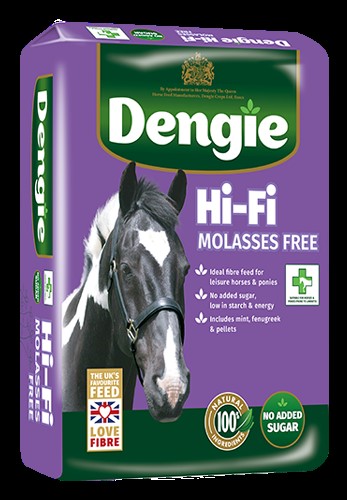
Blood tests - Equine Metabolic Syndrome (EMS)
A few days after taking the x-rays, Jonathan visited again to test Q for EMS and to take his bloods.
Equine Metabolic Syndrome (EMS) is similar to type 2 diabetes in people. It is caused by being overweight and high circulating levels of insulin in the blood and is often associated with laminitis.
When testing for EMS, Q was starved for 6 hours before being given a dose of oral Karo syrup. Around 30 minutes later, Jonathan took his bloods and reported back Q’s levels were just on the borderline of 45. We decided to try and let nature take its course with the reduction of feed and re-test again in 6 weeks.
Flashing forward – I can confirm Q’s results did in fact decrease to 17, this is a healthy result.
Find out more about EMS here - https://bvajournals.onlinelibrary.wiley.com/doi/10.1136/vr.103226
The journey – September – November
Over the following 3 months, I continued to have x-rays every 6 weeks to ensure we were going in the right direction.
I highly suggest both your vet and farrier exchange numbers to discuss x-rays and a suitable trimming plan to ensure feet are trimmed and aligned in accordance with each x-ray.
Shoes
In early December, I had both Jonathan and William visit Q to re x-ray with the plan to put on shoes.
I can confirm the near fore had decreased to 0% rotation with the right fore being 4% rotated, please see images below:
December
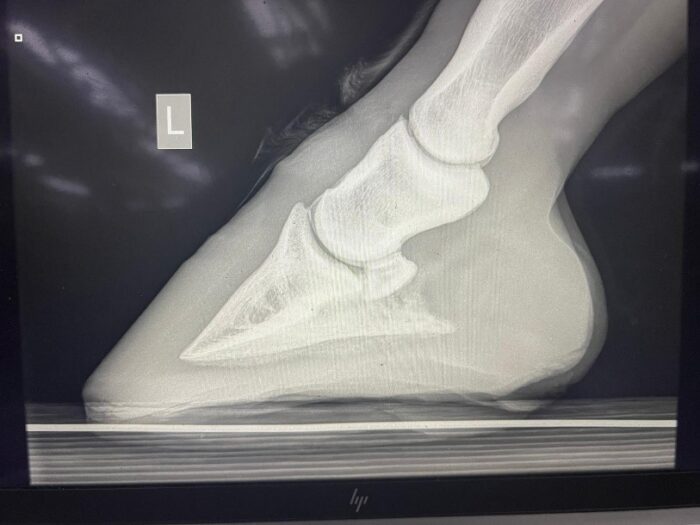
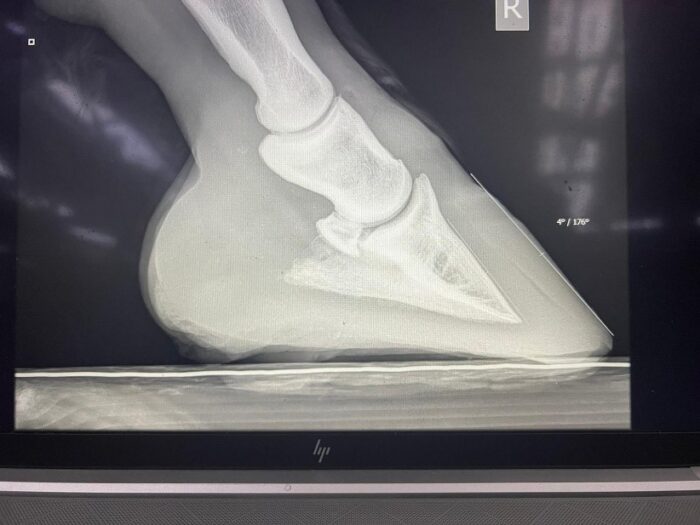
After the above x-rays were taken, we trotted Q up to ensure he was sound to wear shoes. I’m happy to say he was and I can’t explain the relief to finally be able to put some shoes on him, although I was disheartened to see the right fore still had some rotation.
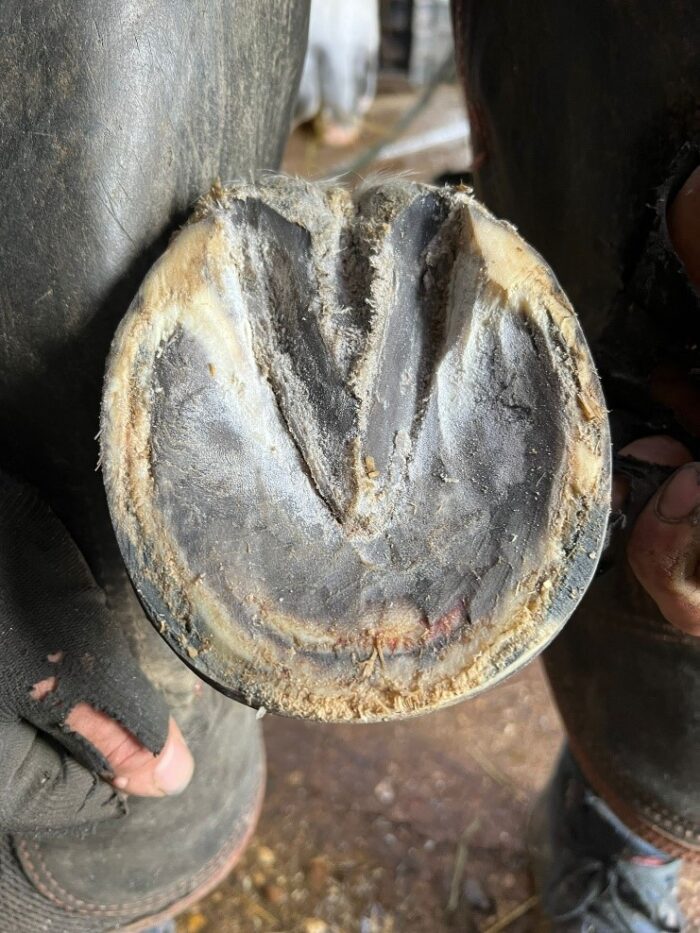
Here is a picture displaying the red laminitic line.
We decided to shoe Q with Christmas Tree pads, giving extra support making the shoes similar to a heart bar without the weight of the steel heart bar shoe and redistribute the load to the frog allowing for shock absorption.
Sole pack was also added to help cushion the sole to help with rotation and aid overall comfort.
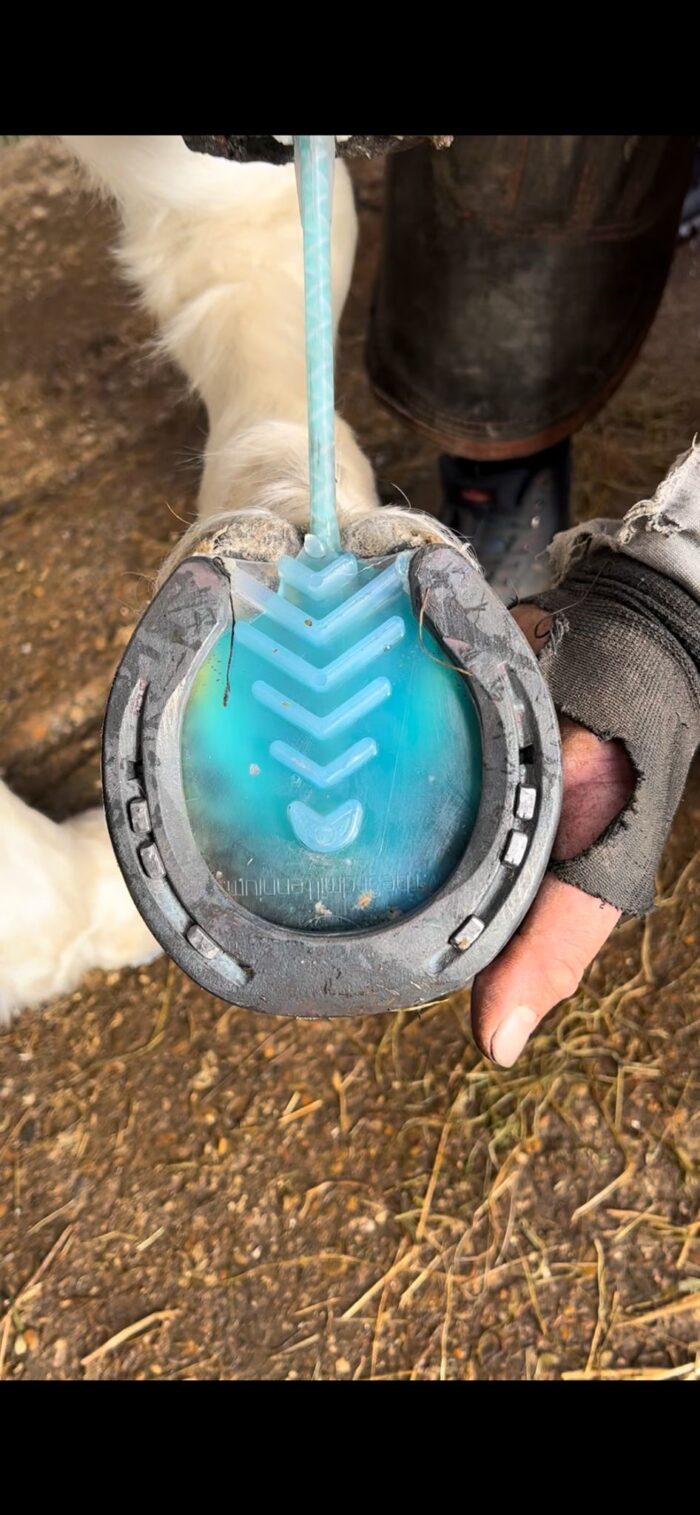
Hand walking and turnout – December
Once Q had his fancy new shoes on, Jonathan confirmed I was finally allowed to walk Q out of his stable and walk around the menage for 45 minutes – this was just in hand to start with.
For the first week, I sedated Q to start with when walking and turning out in the field.
I walked Q in the menage on a straight line in hand and after a few weeks progressed with long-reigning after Jonathan’s approval.
Turnout wise, I restricted him to 1 hour in a small square field every three days.
Late January
After 6 weeks we again re x-rayed and as you can see in the picture the right fore had only decreased by 1% in rotation. Jonathan again spoke to my farrier and we decided to be a little less cautious and take more off the hoof to realign with the pedal bone.
Jonathan confirmed I could start trot work for 5 minutes ridden in the menage and increase by 5 minutes every week. This was providing Q continued to stay sound with shoes.
Current Date
I have recently moved to a different yard that has a bark arena to turn Q out on now we have the spring grass in full action. The field has also not been fertilised in 25 years, this being a key reason for moving.
After just a few weeks I can really notice the difference in him, he seems much happier being able to be out the stable – even just in his bark arena eating soaked hay.
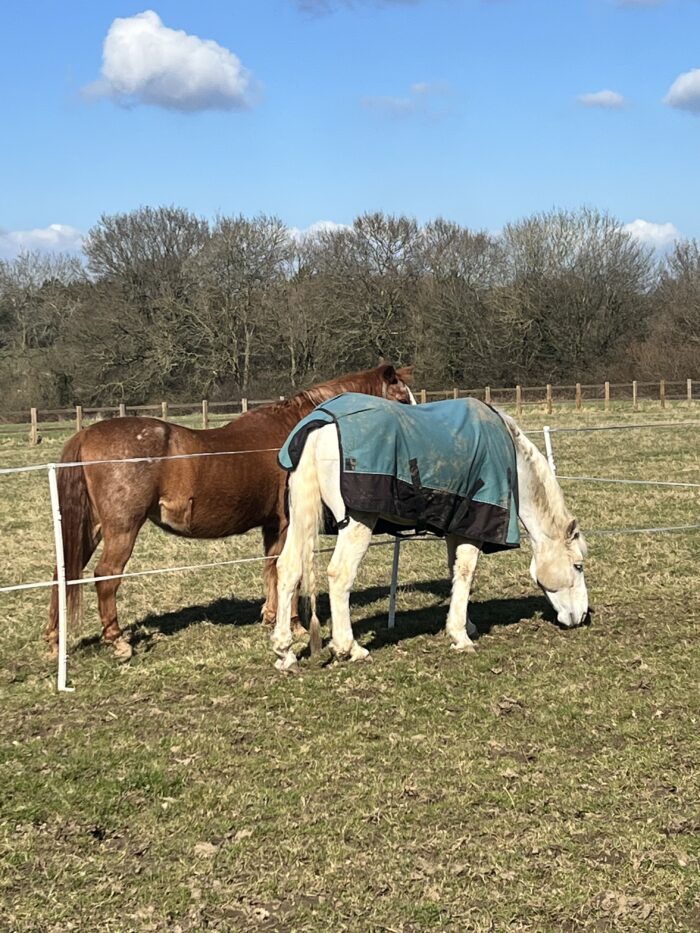
So, what’s next?
Jonathan has informed me that I can now start hacking out, this is great as he really needs to now build up his muscle. With my vet’s guidance, I am also using a local water treadmill service to help build those muscles up.
Price of treating laminitis
I also wanted to share with you the price of treating laminitis, you may need to sit down for this one!
| Treatment | Price |
| X6 vet visits and X-Rays / blood tests | £3.000 |
| Farrier costs | £1,000 |
| Increased bedding | £500 |
Total - £3,500
This is just 7 months into the treatment of laminitis and I can say without insurance, I really do not know how I would have afforded to pay this.
We still have a very long road ahead of us, with more x-rays to come and more blood tests to check we’re still on track.
I have also created a vlog alongside Dengie. You can watch the full video here – link or insert into blog.
Make sure to keep up-to-date and follow our social media channels to watch our next vlog with my vet Jonathan and farrier Will Taylor.
I really hope you have found this useful, as when searching for laminitis case studies I found very little on the internet.
About SEIB
SEIB have been arranging insurance for horses for over 50 years. This experience allows us to tailor policies to suit your circumstances and ensure that you, and your horses, are covered should the worst happen and you need to make a claim, like Georgina and Mr Q’s.